Hampshire Wildlife Trust - Bleating from beyond the rough!
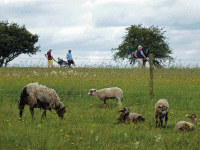
This sets the scene for a success story where golf courses are joining forces with a local Wildlife Trust to restore rare wildlife habitats, creating a wildlife link - a so called Nature Improvement Area involving dozens of organisations - across the South Downs National Park from Winchester to Eastbourne.
Hockley Golf Club is a (long) stone's throw across the M3 cutting from Hampshire & Isle of Wight Wildlife Trust's St Catherine's Hill nature reserve. This reserve is a historic hill fort and site of special scientific interest for wildflowers, including rare orchids and butterflies. Yet, it is vulnerable from being isolated from other fragments of rare chalk grassland; wildlife needs to be able to move across the landscape if it is to survive. That is why the Wildlife Trust is helping the golf club to restore this special kind of grassland on the course using the traditional method of grazing with sheep.
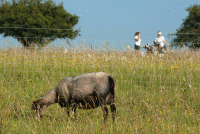
Here, the course has the potential to act as a 'stepping stone' for very rare wildlife, such as the Duke of Burgundy butterfly. This species feeds on cowslip and primrose only, and is very particular about where it lives.
The Wildlife Trust uses the traditional Shetland breed of sheep which thrive on the rank grasses and invasive plants, encouraging the growth of the finer grasses and herbs that are so distinctive on chalk grassland. The sheep are fenced using electric fencing or unobtrusive permanent fencing to stop them wandering onto the fairway. So far, this hasn't happened! Members at both clubs have been delighted and intrigued - in equal measure - at these new additions to their courses which have become unofficial mascots. There have been the inevitable references to mint sauce, of course.
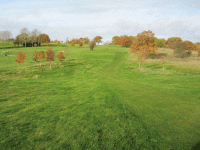
The sun-drenched hillsides and thin chalk soils of the South Downs have been home to the now rare chalk grassland habitat for millennia.
This herb-rich grassland contains dozens of species of plant per square metre; sheep's fescue, salad burnet, quaking grass, rock rose to name a few. Occasionally, pyramidal orchids and fragrant orchids are found.
Established chalk grassland has humps which are most visible in winter. These are actually anthills which have grassed over and may be topped with wild thyme. In the chambers below, a small miracle may be taking place; a stowaway which is exploiting the gullibility of the humble but hardworking meadow ant. The caterpillar of the powder-blue chalkhill blue butterfly literally provides a sweetener in the form of sugary drops in exchange for protection from the ants whilst it turns into a pupa and eventually an adult butterfly.
Chalk grasslands are an ecosystem where a complex web of life takes centuries to establish, but can be lost very quickly. One of the threats to chalk grassland is neglect. Without grazing or careful cutting and collecting, the scrub moves in. Intentional or accidental application of herbicide or fertilisers is also disastrous for these habitats.
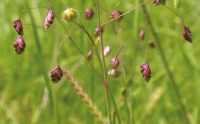
Sometimes, this comes at a minor inconvenience in the form of a temporary electric fence, a more relaxed mowing regime or a buffer strip where there is no spraying, but people are often surprised at how it enhances their sporting experience having a natural backdrop to their course. It is also good for the reputation of the sporting estate as it plays its part in conserving threatened wildlife. In the long run, it may actually mean less work for often stretched groundstaff. And, what price can you put on a swallow skimming over long grass full of flowers?
More people are waking up to the fact that people need wildlife for their wellbeing, and making golf courses and sports pitches better for wildlife is not only surprisingly easy, it helps players and visitors feel even better after their time playing.
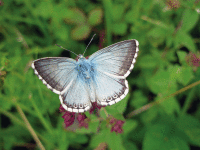
What part can you play?
One of the biggest barriers to more of these success stories is the culture of tidiness - cutting back and mowing all areas because that's what has always happened. It only takes someone with a bit of imagination to see the greater beauty in a backdrop of wildflowers and butterflies rather than more green turf to maintain on a weekly basis. Millions were inspired by the wildflower display at the Olympic park; instead of standard issue turf, visitors were delighted to see the classic wildflowers of the English countryside.
Your local Wildlife Trust may be able to help you create areas for wildlife and become part of its Living Landscape vision. By encouraging wildflowers you will, at the same time, be bringing your course or pitch to life, literally, and enabling people to enjoy it all the more.
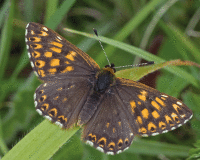
There are other opportunities such as creating or maintaining natural wetlands, putting bat or bird boxes in trees and managing hedges sympathetically for birds.

For information on managing golf courses for wildlife see: www.hertswildlifetrust.org.uk/what-we-do/building-living-landscape/golf-courses
For information on Coronation Meadows visit: http://coronationmeadows.org.uk/



